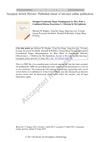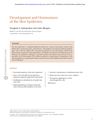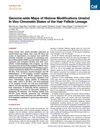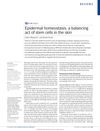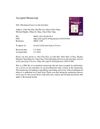Integration of Biochemical and Mechanical Signals at the Nuclear Periphery: Impacts on Skin Development and Disease
January 2018
in “
Stem cell biology and regenerative medicine
”
nuclear lamina LINC complex keratinocytes A-type lamins B-type lamins lamin A/C disassembly lamin A phosphorylation Hutchinson-Gilford Progeria Syndrome mechanical signals skin homeostasis skin regeneration epidermal keratinocyte function alopecia chromatin reorganization epidermal differentiation histone deacetylation chromatin remodelers hair follicle development skin cells hair loss gene expression skin diseases
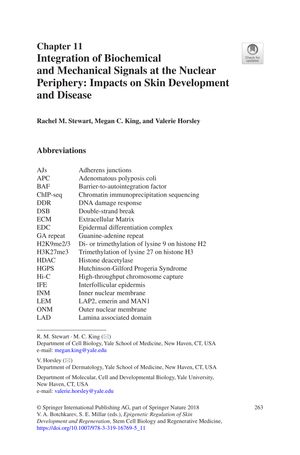
TLDR The conclusion is that the nuclear lamina and LINC complex in skin cells respond to mechanical signals, affecting gene expression and cell differentiation, which is important for skin health and can impact skin diseases.
The document from 2018 examines the role of the nuclear lamina and the LINC complex in skin cell function and disease, particularly focusing on keratinocytes. It explains how the nuclear lamina, composed of A-type and B-type lamins, is involved in gene expression, genome integrity, and the integration of mechanical signals, which are essential for skin homeostasis and regeneration. The study highlights that lamin A/C disassembly and phosphorylation are crucial for keratinocyte differentiation, and mutations in lamin A can cause Hutchinson-Gilford Progeria Syndrome. The LINC complex is shown to be vital for transmitting mechanical stimuli to the nucleus, affecting nuclear proteome and mechanics, with implications for epidermal keratinocyte function and diseases like alopecia. The document also discusses the reorganization of chromatin during epidermal differentiation, the role of histone deacetylation, and chromatin remodelers in skin and hair follicle development. It suggests that the nuclear lamina and LINC complex respond to mechanical inputs, which may influence chromatin structure, gene expression, and differentiation, with further research needed to understand these mechanisms and their implications for skin diseases.
